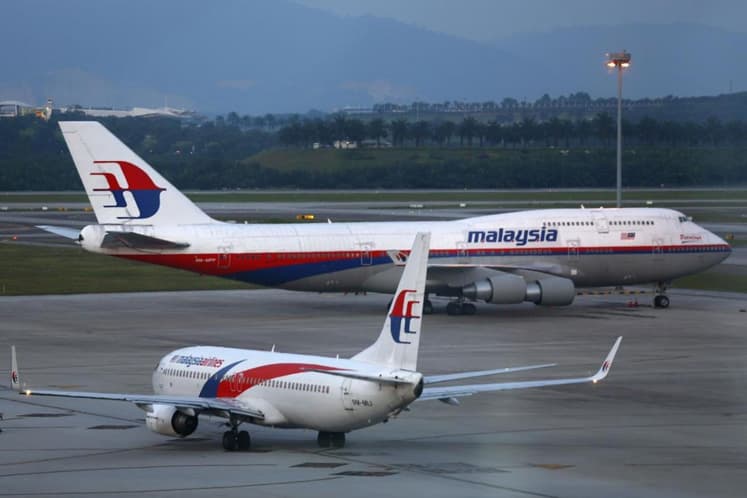
GENEVA (Dec 5): Airlines in Asia-Pacific are expected to see profits rise 8.4% year-on-year (y-o-y) to US$9 billion in 2018 from an expected US$8.3 billion this year as demand growth outpaces capacity increases, says the International Air Transport Association (IATA).
The global airlines' grouping anticipates regional air transport demand to grow 7% y-o-y in 2018, while capacity is expected to rise by 6.8% y-o-y. A strong upcycle in the cargo markets will also support the expected profit improvement next year, it added.
Globally, IATA is expecting net profit to rise to hit US$38.4 billion next year, up 11.3% from the US$34.5 billion expected for 2017. Overall revenues are seen rising 9.4% y-o-y to US$824 billion in 2018.
In terms of average net profit per departing passenger, global airlines are expecting to see a higher US$8.90 compared with US$8.45 in 2017.
IATA director-general and chief executive officer Alexandre de Juniac said airlines are achieving sustainable levels of profitability, but challenges remain.
“These are good times for the global air transport industry. It’s still, however, a tough business and we are being challenged on the cost front by rising fuel, labour and infrastructure expenses,” he told a media briefing here today.
IATA noted that labour costs are now a larger expense item than fuel, comprising 30.9% of costs in 2018.
Operationally, the industry is forecast to see 4.3 billion passengers worldwide in 2018, up 6% from 4.1 billion in 2017. Cargo volume is expected to grow 4.5% y-o-y to 62.5 million tonnes.
The forecast growth rates are slower than the 7.5% y-o-y seen in 2017 for passengers and the 9.3% cargo volume growth expected this year.
“Asia-Pacific is leading the way in terms of growth and is clearly the centre of gravity in terms of where the industry is going,” said IATA chief economist Brian Pearce, adding that a bigger market size, however, may not necessarily correlate to better profitability.
In terms of revenue per passenger kilometres (RPK), airlines are expected to see a 6% growth in 2018 compared with a 5.7% expected increase in available seat kilometres (ASK). The association expects the faster demand growth to push average load factor to a record 81.4%, which it expects to boost yields by 3%.
For cargo volume, the strong growth seen in 2017 was due to unexpectedly strong demand that pushed companies to restock inventories quickly, IATA said. “This led cargo volume to grow at twice the pace of the expansion in world trade (4.3%),” said IATA.
“Cargo yields are expected to improve by 4% in 2018 (down from the 5% in 2017). While restocking cycles are usually short-lived, the growth of e-commerce is expected to support continued momentum in the cargo business beyond the rate of expansion of world trade in 2018,” the association added.
In 2017, IATA said airlines hit a new record of over 20,000 city-pair connections, up by 1,351 from 2016. In 1996, there were fewer than 10,000 city-pair connections, defined as scheduled services with more than one flight per week using aircraft carrying more than 20 seats.
Over the same period, airline service costs for consumers have fallen from US$0.86 per one tonne kilometre to US$0.80, a 7% decline over two decades according to IATA. "Since average consumer prices across the world have more than doubled, this represents a halving in the real or inflation-adjusted cost of air transport," said Pearce.
Meanwhile, Pearce told theedgemarkets.com that competition remains intense in Southeast Asia, which generally depresses profitability.
He expects China, India and Indonesia to lead the way in terms of passenger volume growth in 2018.
“The focus is really on the pressure from cost (increases),” said Pearce. “Next year, we are expecting Brent crude to be around US$60 and jet fuel to be around US$74 a barrel.”
The upward cost pressure from fuel prices is in tandem with rising charges by airline industry suppliers and new infrastructure costs that are contributing to an expected slowdown in capacity increases in 2018, he added.
That said, IATA expects passenger load factor to remain comfortably above the breakeven point for airlines globally going into 2018, despite earnings before interest and tax (EBIT) coming under pressure from higher costs.
“We believe industry profitability is on a more sustained path so even in weakened business conditions we think the industry will perform better than it has in the past because of the (load factor) gap,” said Pearce, noting that while low oil prices have contributed, the load factor gap has been above breakeven level since before 2015.
Overall, IATA is expecting the industry-wide operating margin to squeeze to 8.1% next year from 8.3% in 2017, though it sees net margins rising to 4.7% next year from 4.6% this year.